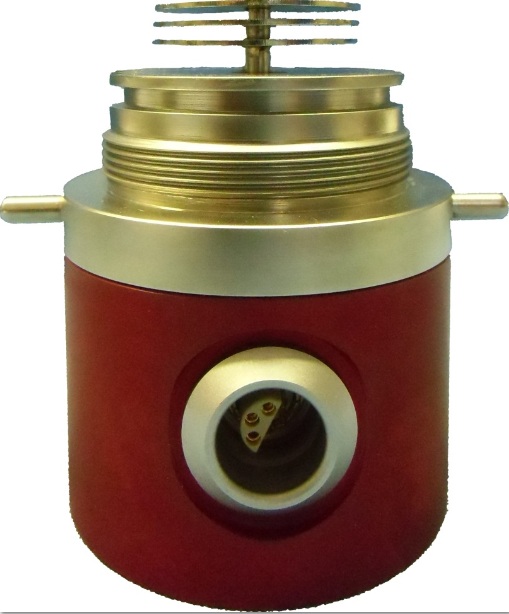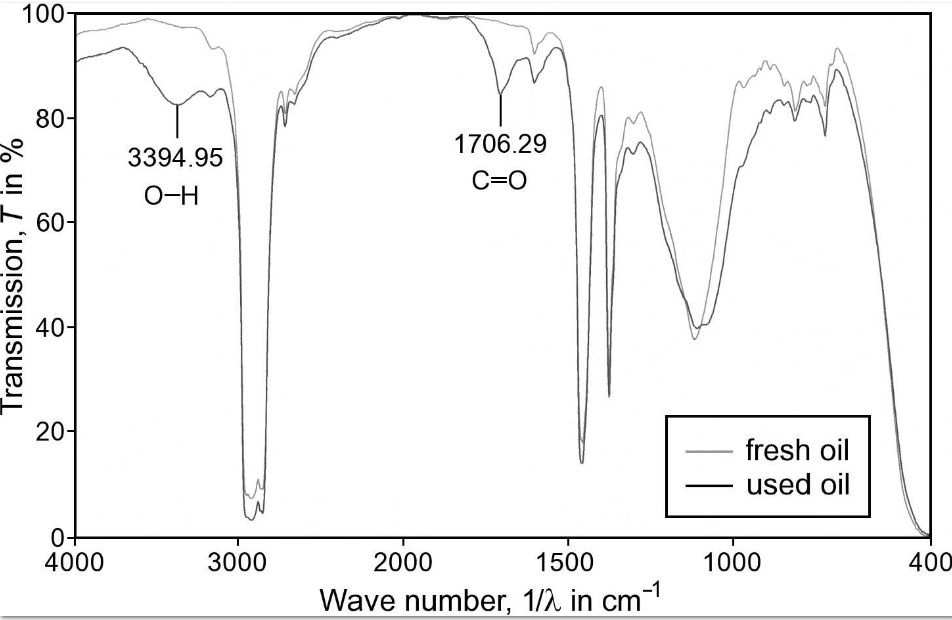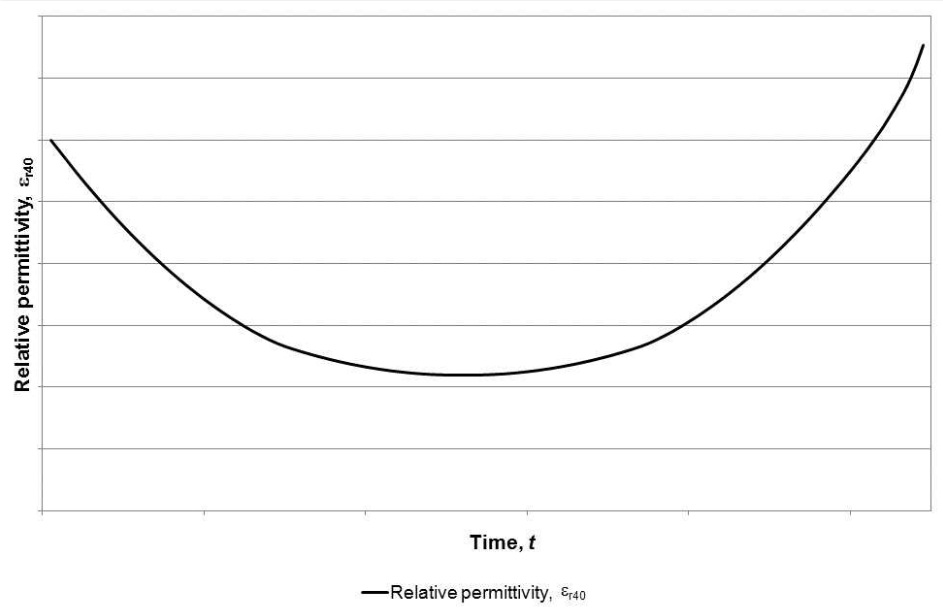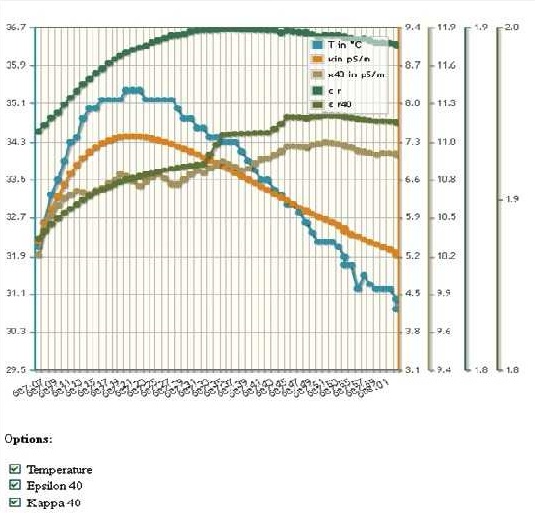Welcome to Sino Bearings web
24x7 HOTLINE:+86-28-81454188

 TECHNOLOGY
TECHNOLOGYAn online web-based oil diagnosis system for the early identifying of critical operating conditions for premature failures of rolling bearings in industrial and particularly wind energy gearboxes by white etching cracks is presented. The new approach utilizes sensor detection of chemical aging of the lubricant and its additives due to causative vibration loading.
The mainly large roller bearings in wind energy gearboxes fail pretty frequently way before their calculated L10 life by so-called white etching cracks. Material damage is characterized by mostly axial raceway cracks with occasional pock-like spallings and branching and spreading crack propagation from the surface to the depth driven by corrosion fatigue. The root cause of these premature bearing failures is vibration loading. The resulting specific mixed friction operating conditions involve the high localized friction coefficients that initiate tensile stress induced brittle spontaneous cleavage-like surface cracking. The basic idea of the new premature failure detection condition monitoring system is the early identification of chemical aging of the lubricant and its additives under the influence of vibration loading.
The OilQSens® sensor effectively controls the proper operation conditions of bearings and cogwheels in gears. The online diagnostics system measures components of the specific complex impedance of oils. For instance, metal abrasion due to wear debris, broken oil molecules, forming acids or oil soaps, result in an increase of the electrical conductivity, which directly correlates with the degree of contamination of the oil. For additivated lubricants, the stage of degradation of the additives can also be derived from changes in the dielectric constant. The determination of impurities or reduction in the quality of the oil and the quasi continuous evaluation of wear and chemical aging follow the holistic approach of a real-time monitoring of an alteration in the condition of the oil-machine system. Once the oil condition monitoring sensors are installed on the wind turbine or other industrial gearbox, the measuring data can be displayed and evaluated elsewhere. The signals are transmitted to a web-based condition monitoring system via LAN, WLAN or serial interfaces of the sensor unit. Monitoring of the damage mechanisms during proper operation below the tolerance limits of the components enables specific preventive maintenance independent of rigid inspection intervals.
Principles of OilQSens®
With the OilQSens® unit, components of the complex impedances X of oils, in particular the specific electrical conductivity k and the relative permittivity er as well as the oil temperature T are measured [1-3]. The values k and er are determined independently of each other. Fig. 1 shows the sensor with its triple plate design.

Fig. 1: Sensor with triple plate design.
Oils are electrical non-conductors. The electrical residual conductivity of pure oils lies in the range below 1 pS/m.
For comparison, the electrical conductivity of the electrical non-conductor distilled water is larger by six orders of magnitude.
Abrasive (metallic) wear, ions, broken oil molecules, acids, oil soaps, etc., cause an increase of the oil conductivity k. It rises with increasing ion concentration and mobility. The electrical conductivity of almost all impurities is high compared with the extremely low corresponding property of original pure oils. A direct connection between the electrical conductivity and the degree of contamination of oils is found. An increase of the electrical conductivity of the oil in operation can thus be interpreted as increasing wear or contamination of the lubricant. The aging of the oil is also evident in the degradation of additives. The used additives reveal high conductivity compared with the oil.
The consumption of the additives is reflected in a reduction of the electrical conductivity and permittivity of the oil. The gradient, i.e. the time derivative, of the conductivity or the dielectric constant progression respectively represents a measure of the additive degradation and consumption. The full additive degradation is indicated by the slope of zero (bathtub curve). Then the measurement signal increases further with increasing pollution, water entry, etc.
Ion mobility and thus electrical conductivity k are dependent on the internal friction of the oil and therefore also on its temperature. The conductivity k of the oil increases with temperature. The type of pollution and its temperature dependence cannot be assumed to be known. To improve the comparability of measurements, a self-learning adaptive temperature compensation algorithm is necessary. An integral alteration of the oil quality can then be assessed by the temperature compensated conductivity value, whereas the type of contamination is not determinable. The relative permittivity is measured with the same basic sensor arrangement as used for the determination of the electrical conductivity.
Premature failures of rolling bearings due to vibrations and correlation with oil aging
Bearings in industrial, e.g. wind turbine, gearboxes quite often suffer from a significantly shorter life than calculated by so-called white etching cracks [4]. These early failures are characterized by mostly axial raceway cracks, revealing vertical semi to fully circular cleavage-like lenticular brittle spontaneous incipient cracks in preparatively opened original fracture faces. Occasionally, pock-like spallings are associated with the surface cracks, as shown exemplarily in Fig. 2 [5]. The developing deep crack systems are open to the raceway, from which oil penetrates and promotes further corrosion fatigue crack growth as well as local secondary microstructural changes in the form of crack path decorating white etching constituents. It is evident from fractography and X-ray diffraction (XRD) residual stress analyses that the cleavage-like incipient cracks are caused by frictional tangential tensile stresses, which occur in subregions of the contact area in vibrationally induced mixed friction operating conditions.

Fig. 2: Inner ring raceway with typical axial cracks and few associated pock-like spallings.
XRD based material response analysis of run rolling bearings, suffering from white etching cracks on still largely undamaged raceways, reveal the causative vibration loading. It is further reported that lubricant aging occurs under the influence of vibrations. An example of an infrared spectrum of used oil from rig test run of a roller bearing is provided in Fig. 3 [6]. The found O?H and C=O oxidation bands indicate operational acidification of the oil, also reflected in the dissolution of MnS inclusion lines on the raceway, as a result of polycondensation reactions towards resinification and beginning lacquer formation. It is this aging of the lubricating oil and its additives that can be detected in an early stage by the OilQSens® sensor.

Fig. 3: Oxidation peaks in the infrared spectrum of a used oil run under vibration loading in a rolling bearing test rig.
Approach for condition monitoring of additivated lubricating oils
Fig. 4 schematically shows the temperature compensated time curve of the permittivity of additivated oil continuously contaminated by the addition of wear debris, water or oil acids from chemical aging. Once the additives are consumed, the vanishing shielding effect results in a characteristic re-increase.

Fig. 4: Temperature compensated permittivity.
The most commercially available particle counters can only detect particles as small as 4 µm. In a very early stage of wear of bearings, gears, hydraulic cylinders, etc., however, particularly smaller particles are produced. A preventive maintenance lowing, rather than rigid inspection intervals, therefore requires recognition of even the smallest particles. These particles are far more common in the oils of functioning machines than larger ones. Oil aging can be involved in the failure, for instance, of rolling bearings [7].
Web-Based decentralized lubricant quality monitoring system
The integration into a suitable communication structure and the realization of an online monitoring system offers an interesting practice-oriented utilization of the oil sensor system. This is briefly discussed below.
Preferred areas of application of the sensor system are energy production and automated technical plants that are operated locally, like e.g. wind turbines, generators, hydraulic systems or gearboxes. Plant employers are interested in continuous automated in vivo examination of the oil quality rather than interrupting the operation for regular sampling. Online oil status monitoring significantly improves the economic and ecological efficiency by increasing operating safety, reducing down times or adjusting oil change intervals to actual requirements. Once the oil condition monitoring sensors are installed on the plants, the measuring data can be displayed and evaluated elsewhere. A flexible decentralized monitoring system also enables the analysis of measuring signals and monitoring of the plants by external providers. A user-orientated service ensuring the quantitative evaluation of changes in the oil-machine system, including the recommendation of resulting preventive maintenance measures, relieves plant operators, increases reliability and saves costs.
In a web-based decentralized online oil condition monitoring system, the sensor signals are preferably transferred through the Internet to a database server and recorded on an HTML page as user interface [8]. Fig. 5 shows the displayed measured data.

Fig. 5: The displayed measured data.
Following authentication, a simple web browser permits access via the wired or wireless LAN. In case of alarm signals, an immediate automated generation of warning messages, for instance by e-mail or SMS, is possible from any computer with Internet connection. Fig. 6 shows the OilQSens® sensor system with communication module [9].

Fig. 6: OilQSens® sensor system with communication module.
Summary
The online diagnostics system measures components of the specific complex impedance of oils. For instance, metal abrasion due to bearing wear at the tribological contact, broken oil molecules, acids or oil soap cause an increase in electrical conductivity that directly correlates with the degree of pollution of the oil. The dielectrical properties of the oils are especially determined by the water content, which, in the case of products that are not enriched with additives, becomes accessible by an additional accurate measurement of the dielectric constant. In the case of oils enriched with additives, statements on the degradation of additives can also be deduced from recorded changes in the dielectric constant.
Indication of damage and wear is measured as an integral factor of, e.g., the degree of pollution, oil aging and acidification, water content and the decomposition state of additives or abrasion of the bearings. It provides informative data on lubricant aging and material loading as well as the wear of the bearings and gears for the online operative monitoring of components of machines. Additional loading, for instance, by vibration induced mixed friction in rolling-sliding contact (rolling bearings, gears, cams, etc.) causes faster oil aging. Verified in roller bearing rig tests, the oil suffers from incipient resinification and significant acidification, as proven by infrared spectroscopy of used lubricant.
For an efficient machine utilization and targeted damage prevention, the new OilQSens® online condition monitoring system offers the prospect to carry out timely preventative maintenance on demand rather than in rigid inspection intervals. The determination of impurities or reduction in the quality of the lubricants and the quasi continuous evaluation of the bearing and gear wear and oil aging meet the holistic approach of a real-time monitoring of a change in the condition of the oil-machine system.
The measuring signals can be transmitted to a web-based condition monitoring system via LAN, WLAN or serial interfaces of the sensor system. The monitoring of the tribological wear mechanisms during proper operation below the tolerance limits of the components then allows preventive, condition-oriented maintenance to be carried out, if necessary, long before regular overhauling, thus reducing outages caused by wear while simultaneously increasing the overall lifetime of the oil-machine system.
On a bearing and gear rig test, various load cycles are run and the functionality of the introduced electric online condition monitoring sensor system is tested successfully. The evaluation of the experiment is presented.
References
[1] Gegner, J., Kuipers, U. and Mauntz, M.: Ölsensorsystem zur Echtzeit-Zustandsüberwachung von technischen Anlagen und Maschinen, Technisches Messen 77, 2010, pp. 283-292
[2] Kuipers, U., Mauntz, M.:Ölsensorsystem – Sensorsystem zur Messung von Komponenten der komplexen Impedanz elektrisch gering leitender und nichtleitender Fluide, dessen Realisierung und Anwendung, Patentanmeldung Nr. 10 2008 047 366.9, Anmelder: cmc Instruments GmbH, Deutsches Patentamt, München, Anmeldetag: 15. 9. 2008
[3] Kuipers, U., Mauntz, M.: Verfahren, Schaltungsanordnung, Sensor zur Messung physikalischer Größen in Fluiden sowie deren Verwendung, Europäische Patentanmeldung Nr. EP 09000244, Europäisches Patentamt, München, 9. 1. 2009
[4] Gegner, J.: Tribological Aspects of Rolling Bearing Failures, In: C.-H. Kuo (ed.), Tribology – Lubricants and Lubrication, InTech, Rijeka, Croatia, 2011, Chap. 2, pp. 33-94
[5] Nierlich, W., Gegner, J.: Introduction of the Normal Stress Hypothesis for Mixed Friction in Rolling-Sliding Contact, VDI Reports 2147, VDI Knowledge Forum, Düsseldorf, Germany, 2011, pp. 277-290, in German
[6] Gegner, J., Nierlich, W.: Operational Residual Stress Formation in Vibration-Loaded Rolling Contact, Advances in X-ray Analysis, Vol. 52, 2008, pp. 722-731
[7] Gegner, J., Nierlich, W.: Mechanical and Tribochemical Mechanisms of Mixed Friction Induced Surface Failures of Rolling Bearings and Modeling of Competing Shear and Tensile Stress Controlled Damage Initiation, T+S Tribologie und Schmierungstechnik 58, 2011, 10-21
[8] Gegner, J., Kuipers U. and Mauntz, M.: New Electric Online Oil Condition Monitoring Sensor – an Innovation in Early Failure Detection of Industrial Gears, The 4th International Multi-Conference on Engineering and Technological Innovation July 19th – July 22nd, 2011, Orlando, Florida, USA 2011, Proceedings Volume I, International Institut of Informatics and Systemics, Winter Garten, FL, USA, 2011, pp. 238-242
[9] Gegner, J., Kuipers U. and Mauntz, M.: High-precision online sensor condition monitoring of industrial oils in service for the early detection of contamination and chemical aging, Sensor+Test Conferences 7.-9.6.2011, Nürnberg, AMA Service GmbH, Wunstorf, 2011, pp. 702-709
KMK BEARINGS